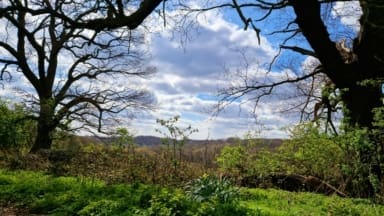
Epping Forest stretches from Manor Park in the south, through to Epping in the north, and covers an area of around 8,000 acres – roughly nine times the size of New York’s Central Park. The forest makes up 73% of the 11,000 acres protected by the City of London Corporation and attracts more than 10 million visitors per year.
Home to over one million trees, some of which are up to 1,000 years old, supporting a wealth of insects and fungi including many rare and vulnerable species.
Epping Forest is conserved by the registered charity, the City of London Corporation as part of a network of internationally important open spaces which it manages across London and southeast England. Epping Forest is a designated as a European Site of Special Scientific Interest, a Special Area of Conservation, and one of the few remaining extensive ancient forests in the south of England.
The report by Natural Capital Solutions, calculated the value of a number of benefits Epping Forest delivers to the public, including through recreation, health and wellbeing, air and water quality, and by removing carbon from the atmosphere. They found that the Forest’s health and recreation benefits alone are worth £50.7 million every year to society, and its ability to capture carbon from the atmosphere is worth £4.1 million annually.
The report also shows that the site delivers the highest benefit-to-cost ratio of all City Corporation-managed open spaces at 20.2, which means that for every £1 spent on service provision, the Forest delivers £20.20 in public benefits.
The Forest is of national and international conservation importance, containing two registered historic parks, eight listed buildings and four scheduled ancient monuments. It provides access to facilities for physical activity and recreation such as walking and running, cycling, horse riding, angling, football, cricket and golf. There are three visitor centres, a museum and more than 100 ponds and lakes.
Chairman of the City Corporation’s Epping Forest and Commons Committee, Ben Murphy, said: “For the first time, we are able to articulate the economic value of the ‘green lungs of London’, using scientific methodology. As Conservators, this valuation of our natural capital assets helps us understand the impact of the work we do and will help inform future decision-making and resource allocation. It will also allow us to attract support from external stakeholders to deliver targeted improvements to further increase Epping Forest’s environmental and social value. Climate change, the risk of pests and diseases and increased local planning pressures all pose significant risks to the health and wellbeing of Epping Forest. This report enables us to think about what the cost of damage to the Forest might mean for us as a society. We must all redouble our efforts to ensure that never becomes a reality.”
The City Corporation spends £38 million a year on maintaining its open spaces. Many of these sites operate as charitable trusts and are run at little or no cost to the communities they serve.
